2016 Indian Springfield First Ride

Good things come to those who wait
Cruiser riders can be pretty particular about what they want. Why would cruiser aficionados who have a bit of wanderlust be any different? Indian was aware of this before they even released their first models. Those who are more classically inclined go for the Indian Chief Vintage. The riders for whom maximum mileage is the primary concern can opt for the Chieftain or the Roadmaster. What about the riders who want the classic windshield and hard bags? Until now, they haven’t had any option. The release of the 2016 Indian Springfield changes all that.
The Springfield is Indian’s step into the convertible bagger market. By taking signature elements of the the Vintage and the Chieftain and combining them into a neatly produced package, the Springfield gives the cruiser rider the versatile style of the Chief Vintage while offering the weather protection and cargo capacity of the Chieftain. Although it may be easy to consider the Springfield a parts bin approach to segmenting the cruiser touring market into ever narrower slices, a good bit of thought went into the model’s creation.
Looking at the Springfield in profile, anyone who knows anything about Indians will know the family line from which it hails. The Thunderstroke 111 engine is not only the throbbing heart of the machine, it is the centerpiece which the entire motorcycle is designed to showcase – much like a gemstone in its setting. Similarly, while not all Indians wear skirted fenders, a perusal of the Indian website reveals a deeply rooted family link to them. The headlight nacelle? Well, it’s pure Chief Vintage but ties it in an altered form to the Dark Horse.
Then there is the name. Careful MO readers may remember the name cropping up as an Indian color option, Springfield Blue, and in the occasional Indian-related press release or news items, referencing Springfield, Mass. – where Indian Motorcycle began full-scale production in 1902. So, the name carries a certain historical cachet with the company.
The Springfield was designed to blend key characteristics of the Chief Vintage and Chieftain for an optimal combination of style and function for the traditionalist touring cruiser rider. As with the Chief Vintage, the classic windscreen is easily removable, allowing riders the protection from wind blast on long trips while still letting them benefit from cooling air-flow on shorter hops. On the cold winter morning beginning our ride, the wind protection offered by the windshield was greatly appreciated. Indian did its homework with the shield design as there was no buffeting and minimal back pressure at highway speeds. Additionally, the swap from the Chieftain’s batwing fairing to the windshield removed a whopping 24 lbs from the front of the bike, compared to the Chieftain.
This weight reduction alone makes the Springfield lighter steering than the Chieftain. The Springfield does, however, share the Chieftain’s 25°, 5.9-in rake and trail numbers, which are themselves sportier than the more laid back, stretched out Vintage (a difference that was quite noticeable in our previous tests of the Vintage and Chieftain). With the reduced front end weight of the Springfield, the handling becomes sportier by comparison. This is most noticeable in S-bends where going from floorboard-to-floorboard happens quite quickly for a, roughly, 825-lb. motorcycle.
Reaching back to the rider is a buckhorn handlebar, putting the pilot in a comfortably upright position for racking up the miles. The seat and the floorboard position feel unchanged compared to their progenitors. Similarly, the technology afforded to the rider and the instrumentation are both what we’ve come to expect from Indian’s premium models. Cruise-Control, in-dash informational displays controlled from the switch pods, ABS, and tire pressure monitors are all standard – as are the remote locking features controlled by a wireless remote. The handlebar wiring is routed internally for a neater appearance.
In addition to the wireless lock control, the saddlebags are waterproof, easily removable, and offer 19 gallons of storage capacity. While a 17-gallon accessory trunk is available, the lines of the Springfield’s rear are so tidy that we’d hate to clutter it up. Most importantly, the Springfield offers a 533-lb. carrying capacity which should easily accommodate all but the largest-sized Americans and enough clothing for a decent-length tour. The Springfield passenger, like the Chieftain’s, benefits from floorboards that are adjustable in both height and rotational angle.
Power delivery from the Thunder Stroke 111 is the same as other ones we’ve sampled. The 49-degree V-Twin delivers plentiful torque from its undersquare cylinders. The 101mm x 113mm bore and stroke combine to displace 111 cu. in. (1811cc) and twist out the motivating force via a single-pin crankshaft. The fuel metering is quite smooth and incorporates ride-by-wire technology.
Aside from the quicker steering afforded by the lighter windshield, the Springfield’s handling is standard Indian fare. The stiff forged and cast aluminum frame combines with the 46mm telescopic cartridge fork and the single, air-adjustable shock (with 4.5 in. rear-wheel travel) to deliver a comfortable ride. While the steering is more responsive, the high-speed stability that we’ve enjoyed in the Chieftain remains. Similarly, the dual 300mm semi-floating discs and four-piston calipers deliver plenty of stopping power – though the lever effort is still high. Two channel ABS provide a safety envelope during panic stops or slippery conditions.
To put it succinctly, the Springfield is everything we liked about the Chieftain – and less. The effect that the weight reduction on the front fork has on the bike’s handling can’t be overstated. Couple that with the grunty Thunderstroke 111 plus the premium features that Indian is known for, and the Springfield is a good option for cruiser riders who prefer traditional styling yet don’t want to compromise on a bagger’s carrying capacity. The 2016 Indian Springfield starts at $20,999 and will be available in Thunder Black and Indian Motorcycle Red. The Springfield should start shipping to dealerships in the next few weeks.
2016 Indian Springfield
+ Highs
- Improved handling
- Still love the engine
- Bagger convenience with an easily removable windshield
– Sighs
- Brakes are still fairly high effort
- No touring plans on the horizon
- We had to wait this long to get it
2016 Indian Springfield Specifications | |||
|---|---|---|---|
| Engine Type | 49˚ V-Twin | ||
| Transmission | 6-speed/constant mesh/foot shift | ||
| Battery | 12 volts / 18 amp/hour, 310 CCA | ||
| Bore x Stroke | 3.976” x 4.449” (101 mm x 113 mm) | ||
| Charging System | 42 amp max output | ||
| Clutch | Wet, multi-plate | ||
| Compression Ratio | 9.5 : 1 | ||
| Cooling System | Air / Oil | ||
| Displacement | 111 cid / 1811 cc | ||
| Exhaust | Split dual exhaust with crossover | ||
| Final Drive | Belt drive, 152 tooth | ||
| Fuel Capacity | 5.5 gal / 20.8 ltr | ||
| Fuel System | Electronic fuel injection, closed loop/54 mm bore | ||
| Oil Capacity | 5.5 qts / 5.20 ltr | ||
| Primary Drive | Gear drive wet clutch | ||
| Front Suspension | Telescopic fork, 46 mm diameter, 4.7 in /119 mm travel | ||
| Rear Suspension | Single shock with air adjust, 4.5 in / 114 mm travel | ||
| Dry Weight | 815 lbs / 370 kg | ||
| Ground Clearance | 5.6 in / 142 mm | ||
| Gvwr | 1,385 lbs / 630 kg | ||
| Length | 101.2 in / 2571 mm | ||
| Rake/Trail | 25° / 5.9 in / 133 mm | ||
| Seat Height | 26 in / 660 mm | ||
| Wheelbase | 65.7 in / 1668 mm | ||
| Brake System Type | Individual front and rear control with ABS | ||
| Front Braking System | Dual 300 mm floating rotor with 4-piston calipers | ||
| Rear Braking System | Single 300 mm floating rotor with 2-piston caliper | ||
| Front Tire | Dunlop Elite 3 130/90B16 73H | ||
| Front Wheel | Cast 16” x 3.5” with tire pressure monitoring | ||
| Rear Tire | Dunlop Elite 3 180/60R16 80H | ||
| Rear Wheel | Cast 16” x 5.0” with tire pressure monitoring | ||
| MSRP | Thunder Black:$21,499 ($21,749 in California) Indian Motorcycle Red: $21,949 ($22,199 in California) | ||

Like most of the best happenings in his life, Evans stumbled into his motojournalism career. While on his way to a planned life in academia, he applied for a job at a motorcycle magazine, thinking he’d get the opportunity to write some freelance articles. Instead, he was offered a full-time job in which he discovered he could actually get paid to ride other people’s motorcycles – and he’s never looked back. Over the 25 years he’s been in the motorcycle industry, Evans has written two books, 101 Sportbike Performance Projects and How to Modify Your Metric Cruiser, and has ridden just about every production motorcycle manufactured. Evans has a deep love of motorcycles and believes they are a force for good in the world.
More by Evans Brasfield



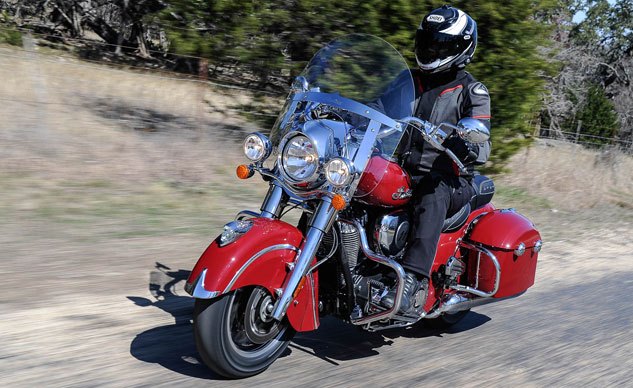


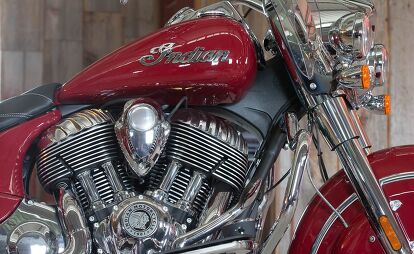












































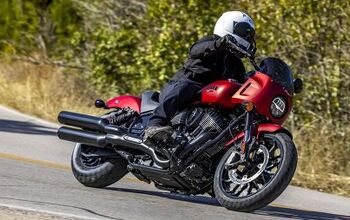
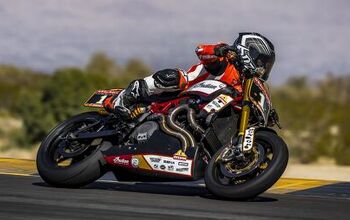

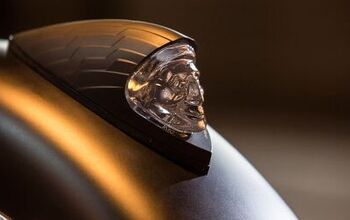











Comments
Join the conversation
After adding a backrest, taller windshield, it's up a couple Gs. Want the tourpak? That adds a bunch too. We're up to 24-25K at that point. What bikes are available at that price and how do they compare? In that ballpark I can get a RT for less or a very lightly used K1600GT and both would be better bikes in every category objectively. May be I just don't get it, and I used to ride Cruisers too, Vulcans, but when BMWs start to become better values, it's time to stop and think.
Evans,
After consideration - a revised INDIAN 'Springfield'.